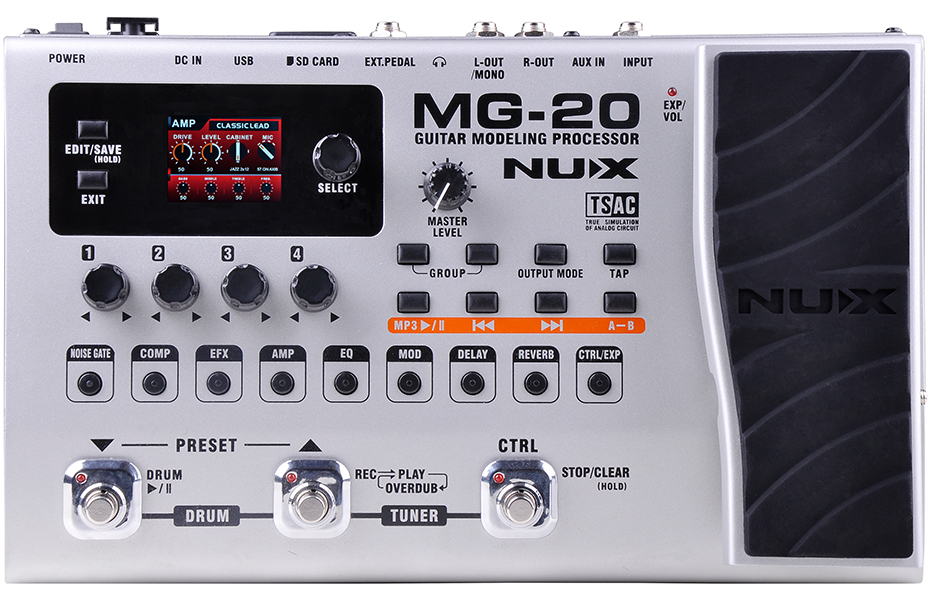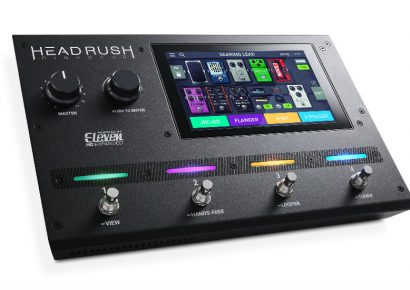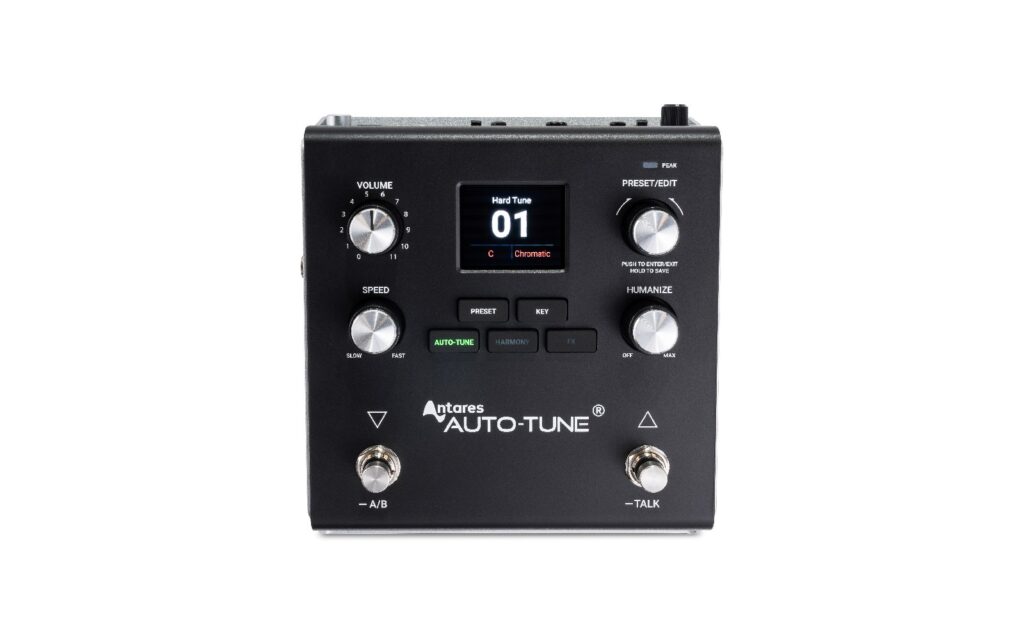NUX have arrived with a nifty guitar modeling processor they’re calling the MG-20; a sure competitor to Boss’ iconic ME-20, from the name at least. Out of the box, you’re presented with a hefty metal slab (3.15kg) that looks more like an old drum machine than guitar processor, and shockingly, you wouldn’t be that off – more on that later. It’s all silver, adorned with spartan black font, and fit with a small LED screen that looks like a calculator. There isn’t a carry handle, which is a bit disappointing considering the weight of the product. Spongy little pads on each corner prevent you from scratching up the unit too hard when you bang it down onto your pedalboard. There isn’t anything particularly showy about the MG-20 and that’s a good thing; this is a brute package to fit almost all of your guitar needs.
On the back, there are an obscene number of ports for you to customise the MG-20. This includes your typical headphone jack, input, left and right outs, but also offers an auxiliary input, external pedal out, USB and SD card slots. To start using the processor out of the box is as simple as most floor pods, though there’s a lot of functionality to unpack. Control of the unit is made exceptionally easy through a smooth expression pedal (with some very nice grip rubber) and three footswitches. The two switches on the left cater to preset functionality, including the drum machine, looper and onboard tuner while the right can be set to activate a specific tone control or an external pedal.
As well as the usual holy combination of effects (distortion, chorus, delay, reverb, phaser, tremolo), the MG-20 boasts a swathe of amp and cabinet emulators. The amp modeling is definitely the jewel in the MG-20’s uneven crown; the little LED screen is excellent for the simple amp controls, and there is a solid range of 16 amplifiers. This is where iOS compatibility would have embellished things, with the option to add even more cabinet emulators. A “drum machine” is also housed inside, though I have to say the drum sound is pretty similar to hitting “rhythm” on an old Casio keyboard. You can feed in other backing tracks via the SD card or USB as an mp3, which feels like a kind of arcane format too. Models to come should again think about digital or iOS compatibility.
What you’re really paying attention to is the quality of the sounds. NUX have put an emphasis on emulating analogue quality through their TS AC technology, and for the most part they do a pretty good job. All of the delays come across strong, with six different variants. I definitely found being able to tap tempo into the delay speed made it worthwhile. More interesting patterns can be produced by subdividing the time too. Reverb is similarly varied, and does a great job at offering enough editability to make it a powerful feature. The chorus, flanger and tremolo FX are a bit more disappointing, sounding almost wafer thin. The onboard compressor helps the range of distortions immensely; the screamer was a beefy tone, with a wiry digital screech.
The noise gate is what ties all of the MG-20’s sides together into an attractive package; whatever the quality of each sound, you’ve got a whole lot of control over any unwanted noise. Fiddling with the decay parameter and threshold control gave me balance few would be able to tell was the work of a floor pod.
NUX have a serious offering in the guitar modeling market with the MG-20. It sits at almost the exact same price point as most, and has more functionality. It won’t make multi-effects skeptics jump until it incorporates more digital compatibility, but it is undoubtedly a powerful unit.


